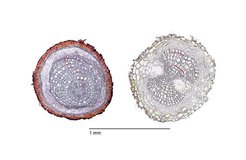Fine roots of the trees are significantly younger than expected

For the English press release, please visit the webpage of the Swiss Federal Institute for Forest, Snow and Landscape Research WSL:
https://www.wsl.ch/en/news/2018/08/researchers-unravel-the-age-of-fine-tree-roots.html
Original publication
Solly, E. F., Brunner, I., Helmisaari, H.-S., Herzog, C., Leppälammi-Kujansuu, J., Schöning, I., Schrumpf, M., Schweingruber, F. H., Trumbore, S. E., Hagedorn, F. (2018). Unravelling the age of fine roots of temperate and boreal forests. Nature Communications, 9(1).
https://www.nature.com/articles/s41467-018-05460-6
Contact at Max Planck Institute for Biogeochemistry:
Dr. Marion Schrumpf, group leader Soil Biogeochemistry
Phone: +49 3641 57 6182, E-mail: mschrumpf@bgc-jena.mpg.de
Dr. Ingo Schöning, scientist
Phone: +49 3641 57 6191, E-mail: ingo.schoening@bgc-jena.mpg.de
Prof Susan Trumbore, director, department Biogeochemical Processes
Phone: +49 3641 57 6110, E-mail: trumbore@bgc-jena.mpg.de
